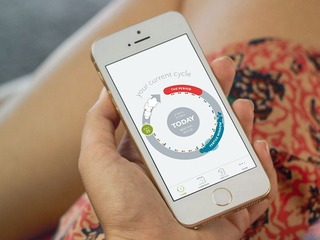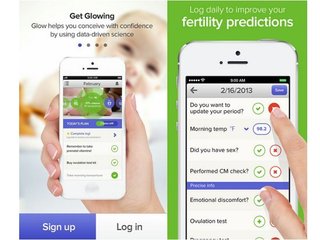Digital health news, funding round up in the prior week; June 26, 2023
Aledade raised $260M; Zocdoc partnered with Elation Health; Eli Lilly acquired Dice
Read more...
Correction: this article inaccurately named Piraye Beim as Director of Celmatix
Healthcare is a big space, and one with many individual parts, not all areas of which are treated equally. Certain diseases, like cancer, are well-funded and researched, while others are given short shrift. That includes fertility treatment, which has traditionally not been covered by insurance, and not received the same amount of money for research as other areas of healthcare.
The fertility business is big and growing. The global fertility services market is estimated to be over $21 billion by 2020, growing at a rate of almost 9 percent, according to data from Technavio. In the Americas alone it is expected to generate revenue of $6.6 billion, growing at 8 percent. According to the American Society for Reproductive Medicine, the inability to have a child affects 6.7 million women in the U.S., or around 11 percent of the reproductive-age population.
At our upcoming Splash Health conference, we will be holding a panel on fertility and how technology is helping to solve the problems that women and couples face. I spoke to the CEOs of three companies who are working in the fertility to space to get their thoughts on what the issues are, how technology is solving them, and what the future looks like.
The problems with fertility
There are a number of issues confronting women and couples seeking fertility treatment, not least of which is the cost, as insurance companies have not seen fertility as an issue worth covering.
"One of the biggest issues with fertility is that it's cost prohibitive," said Gina Bartasi, CEO of Progyny, a provider of accessibility to doctors, price transparency, and financing (Note: Bartasi has since stepped down as CEO of the company). "The majority of fertility treatments is all cash pay. It's out of pocket, and there's trmenedous disparity in pricing, and not a lot of leverage to control pricing."
The average cost to most couples who want fertility treatment is $65,000, she told me. It's so expensive, in fact, that out of the 7 million women who are affected by infertility issues, less than 200,000 of them actually seek treatment, simply because of the cost.
As for why infertility has not been covered by insurance, according to Bartasi, it has "been deemed an elective treatment."
"Even the affordable care act does nothing to affect infertility at all. It only affects women after they become pregnant, and it has no impact on infertility," she said. "While we're not seeing more states provide coverage, we are seeing a change in more and more large self insured emplyoers applying coverage."
Dr. Piraye Beim, Founder and Chief Executive Officer at Celmatix also brought up the issue of cost and coverage. Her company uses uses big data analytics and genomics to improve fertility treatments.
"Treatments are expensive. For some people, it's second only to buying a home in terms of expensive things they have to do," she said. "It's an emotional experience, and that makes it harder. With cancer you have some backup from insurance, who will cover testing and treatments. Even people with excellent insurance have little to no coverage for fertility."
That includes veterans, who have survived massive trauma to the lower part of their body and reproductive organs, though there is currently a bill that would help address the issue of veterans receiving healthcare for fertility treatments.
Another major issue Beim brought up me was research funding and how low it is in comparison to other healthcare issues. In 2015, the National Institutes of Health spent only $72 million on infertility research, compared to over $5 billion for infectious diseases, $1.6 billion for immunization, and $5.3 billion on cancer.
"That ends up impacting things downstream. If you're not generating the basic science, how can we progress on the commercial side?" said Beim.
Part of the reason that infertility hasn't been given the same attention, she told me, is that it's frequently lumped into pediatrics, which also gets much less funding.
"One of the arguments that's made, and it's compelling, is to invert that triangle, and have the majority of dollars going into prenatal care and child development, to set up long term issues," Beim said. "The tide will turn from reactive medicine to preventative medicine and we will go all the way back to when the egg was developing, and was set up having cardiovascular diseases."
Another issue that couples deal with is a lack of data about what to do about their issues, Jake Anderson, co-founder of FertilityIQ, told me. His company helps fertility patients research and evaluate any fertility doctor or clinic, while also providing information about treatments.
"When going through fertility treatments, nobody knows anything. They have no reason to know anything, medically or scientifically, about about reproduction, until something goes wrong. Then they're fighting with their spouse, running out of time, and they have to make a snap decision about where to go and where to get started. It costs a fortune and they have no idea if it will work," he said.
"It's an emotional, life-changing and expensive set of decisions to make and people are operating in the dark. It's been that way for a while, and it's getting more opaque rather than less, with more clinics and doctors and adds on. As the cost goes up, the complexity goes up, and it's hard to get accurate data. It affects a lot of people, one out seven or eight Americans, which is more than diabetes."
The solutions
There are a lot of issues that come with fertility treatments, and each of the companies I spoke to is trying to solve a different aspect of the overall problem.
The company offers SMART (Science and Member-driven Advanced Reproductive Technology) Cycle treatment plans that start with egg or embryo freezing, and which also include embryo screening to reduce miscarriage and provide for single embryo transfer (SET).
"The first thing we do is help employers with SMART Cycle, which is an all inclusive bundle with the latest technology and science included, instead of having to purchase it a la carte," Bartasi explained.
Some of the services offered include concierge services, IVF, surrogacy and egg freezing.
"As more couples wait to have children, there has been increase in need for egg freezing. Women have the option to preserve the egg for use later on, in response to diminished ovarian reserve. It's more cost effective to use younger, frozen eggs," said Bartasi.
The company now has a couple of dozen clients, including large employers like Salesforce. It is currently covering 125,000 patients, and hopes to quadruple that in the first quarter of next year. Its clients have been receptive due to the cost savings thanks to Progyny's offerings.
"Before, clinicians didn’t know which embryo to transfer, so they'd do multiple embryos and they'd wind up with a mom of twins through IVF. They'd both be premature, and require emergency c-section, plus weeks of care for both twins, costing hundreds of thousands of dollars, which their employer had to pay," she explained.
Progyny has seen, in the last nine to 10 months, a 64 percent pregnancy success rate. Progyny has also been able to reduce the twinning and multiples rate to 4 percent compared to the national average of 28 percent.
"We help people prevent problems before they happen, as well as those also struggling with conditions that put them at risk. We allow them to be more data driven in decision making, using their dollars more wisely," said Beim.
"What discourages insurance companies from covering fertility is that it feels so expensive. Thanks to the absence of data, that driven expensive outcomes, like twins and triplets, which is stacking costs on top. It's not only covering treatment, but also setting up high risk pregnancy, with twins or an older mom. Better information will help embolden insurance companies, and we can mitigate risk through better information."
Polaris manages intake by digitally collecting all relevant information that a patient can show up at the clinic door with, rather than them needing to get a thick packet sent to them in the mail. That allows the physician to look at the data ahead of time, and better manage their care. It also helps doctors, who are in short supply, get a better handle on which patients are worth seeing.
"There are only 40 new infertility doctors minted a year to address millions of Americans, while there are tens of thousands of OB/GYNs. The top programs have long waiting lists. It’s unfortunate, because the onboarding experience is so intimidating that 50 percent don't even show up. It's a lost opportunity," she said.
"Celmatix allows physicians to able to see which patients are committed and which are not committed, and then they are able to move someone up on waiting list. It also helps patients understand the privledge and gives them a higher quality interaction. They want a doctor who really knows them and has thought about them."
The company also offers a treatment navigation function, semen analysis, integrated EMR, predictive analytics, and counseling reports. It works directly with clinics, who pay an annual licensing fee, and so far, it has about a dozen clinics on board. Celmatix it has seen 400 percent growth in new patients, adding over 25,000 in the last year.
"We've united different networks on different EMRs. We've been able to bring then all together to provider better information for patients. Denmark, the UK, countries with socialist healthcare can tracks things, and are able to produce large scale studies, but never in the US thanks to those individual EMR systems," said Beim.
"We are building the largest data set of its kind across a dozen centers, and evidence on this sale is unprecedented. That's an extra bit the of value part of the data network."
The company allows patients to search by location or by a specific doctor or clinic name. They can yiew detailed doctor profiles with aggregated metrics including communication quality, degree of individual attention, responsiveness, and overall recommendation. They are also able to see the experience other patient had with this doctor and clinic.
In addition, the platform provides information about different aspects of the fertility experience, with articles about diagnosis, LBGT issues and holistic solutions.
"How do we ensure a patient gets to right doctor, and right clinic? It's a complicated issue. Doctors and patients can be dissimilar. It's not like like I my break foot, and I go to a special surgeon because they’re the best. It doesn’t fit into that rubric. One patient may love a doctor, and another may despite them. The average patient goes to 2.3 clinics, and winds up leaving their doctor after multiple cycles," said Anderson.
"We've alsocome to realize that getting patients to the right doctor is necessary but not sufficient. When they get into the clinic they have to make decisions like IUI or IVF? Should they throw in the towel and go to an egg donor? Should they risk having twins, and potential neurological deficits? There are a million issues, so we expanded our mission to elucidate what those issues are, and figure out what both sides of the argument are for every issue."
Currently 35 percent of fertility patients use FertilityIQ on a monthly basis.
"We're the only game in town. Nobody provides data the way we do it. There's no marketing and everything's free. Nobody else bothered to take that approach. Most sites, any chance they can they price and sell every pixel, so it becomes an untrustworthy experience."
The future
What the future of fertility looks like differs based on who you talk to. To Bartasi, the future it telemedicine and online doctor booking.
"It has to become easier for the patient. The patient is the center of everything we do. Historically, it's been incredibly opaque, cumbersome, and incredibly difficult to book a doctor online. That has been challenging, but in the future I have no doubt that Progyny will make it easier," she said.
"We will make pricing and success rate transparent and there will be a lot more telemedicine, a lot more customer service. We want to be a great equalizer and disruptor. We will be judged in the future based on our patient satisfaction."
To Beim, its will be about genetics and using DNA to determine risk factors.
"In five years, fertility screening will be as basic as pap smears. These are basic screens that women get, like they do to check for cancer risk, and it will be part of the conversation the OB/GYN will be having with their patient. That’s what gets us up every day as a company," she said.
"It will be a new world. Right now, OB/GYNs don’t bring up fertility. They sometimes say, 'I'm not your mother, I'm not your therapist.' They don’t have tools. That's changing with egg freezing as a potential option. Just a few years ago, women going through chemo didn't get counseled about that, now it's standard."
Soon, women will be screened for genetic risk factors they are carrying in their DNA, much like they do for cancer risk.
"Cancer was 15 years ago where fertility is today. It was radiation and chemo, and imperfect diagnoses. If a woman has multiple miscarriages, it is described as 'recurrent pregnancy loss,' from which they learn nothing. The state of diagnoses should be molecular, and based in root causes, which will allow them to be proactive and preventative."
Anderson, however, is more skeptical about what the future will actually bring or fertility, given how slow innovation had been in the past.
"It's hard to say what the future will bring. The lazy answer is that we're going to have more genomic data and we'll be able to know everything better and we're going to respond quicker. The countervailing argument is that women going through fertility treatment still suffer a 70 percent failure rate on cycle basis. Advancement has been slow. We've spent 35 years trying to proceed to perfection, and we've had a hard time innovating in this field. So why now? Why now more than four years ago?" he said.
"If history is any lesson, development comes slowly."
It's especially frustrating given how money there is to be made from fertility treatmens.
"There are oodles of money here, so it defies capitalistic logic. This field is growing like crazy and here we are stuck with less than fabulous success rates. We haven't had much innovation. The reality is that it hasn't gotten done."
If success rates go up only five or seven percent that would be a "miracle," he told me, but admitted that the rate has nowhere to go but up.
What each of three CEOs did agree on, though, was that the election of Donald Trump won't have much of an effect on the space, simply because it hasn't gotten enough attention before.
"Because reproductive health didn't get benefit from the ACA, I don't see any change coming with the new president, or his philosophy," said Bartasi. "Primary care and birth control pills may see ramifications, but we didn't see much change with Obama.”
"I haven’t heard any views from Trump about fertility. That's how low on the totem pole fertility is," said Beim. "The sad news is that there's not a successful platform to be dismantled."
"My impression is that very little innovation gets done on the governments dime. Trump may cow to the religious right's interests, who are fearful of funding treatment that perishes embryos, but I don't know if makes a dent in the money already dedicated to fertility," said Anderson.
"I can see women freezing their eggs, waiting for four years, but that's not realistic. That's a death sentence 45 year old woman. I just dont know if things will dramatically change. It's not like fertility has gotten a lot from the government."
(Image source: parentmap.com)
Aledade raised $260M; Zocdoc partnered with Elation Health; Eli Lilly acquired Dice
Read more...Simple HealthKit and Walmart partnered; Electronic Caregiver raised $95M; Aya bought Flexwise Health
Read more...Alkeus Pharmaceuticals raised $150M; Care.ai partnered with Samsung; DoseSpot bought pVerify
Read more...


